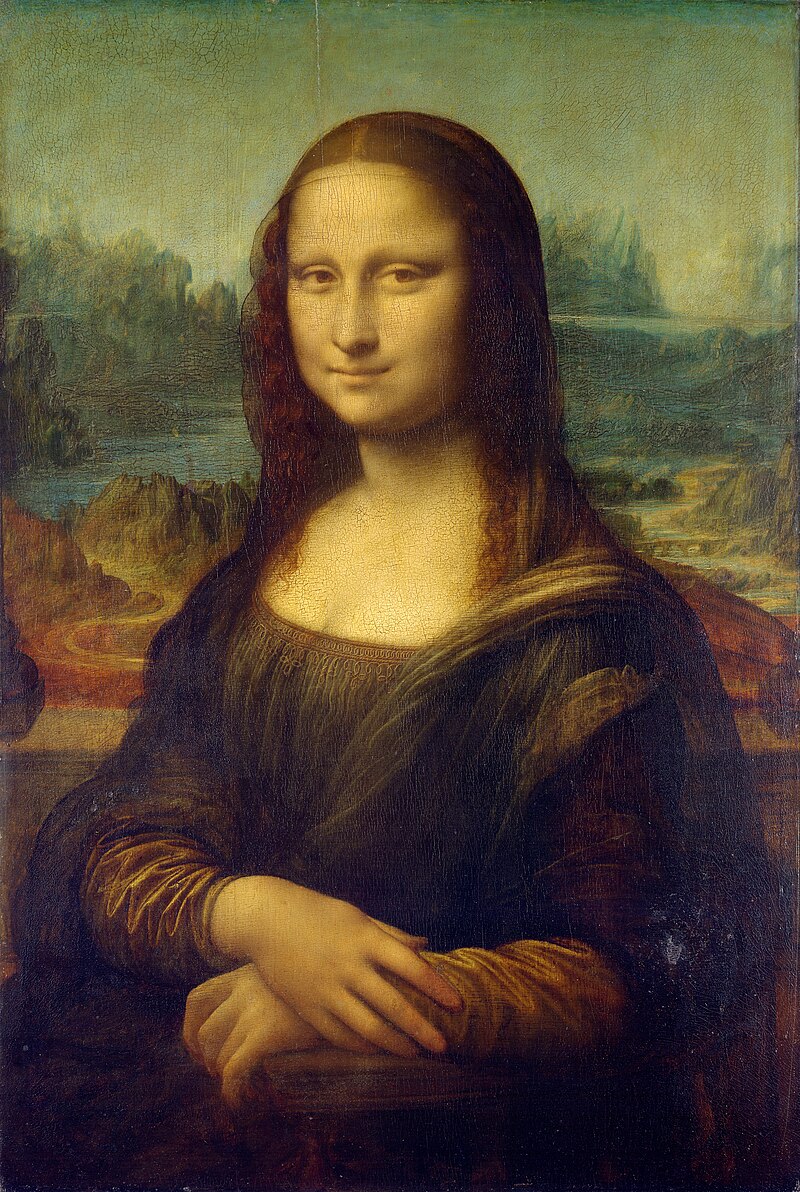 While I will not delve into these techniques too deeply here, I will note one or two. These include da Vinci's decision to paint not on the basis of an outline, like a color by number coloring book, but rather to use light and shadow to delineate objects and set them apart. The result is less a construct and more a tapestry, a river of color flowing together. Also, in rendering the noblewoman's smile, the smile which has captivated millions around the globe, da Vinci made it simultaneously overt and vanishing, leaving the viewer struck with wonder and intrigue. It seems as if there might be more to the picture, to the scene, but we're puzzled as to what it might be. There's presentment, but there is mystery.
While I will not delve into these techniques too deeply here, I will note one or two. These include da Vinci's decision to paint not on the basis of an outline, like a color by number coloring book, but rather to use light and shadow to delineate objects and set them apart. The result is less a construct and more a tapestry, a river of color flowing together. Also, in rendering the noblewoman's smile, the smile which has captivated millions around the globe, da Vinci made it simultaneously overt and vanishing, leaving the viewer struck with wonder and intrigue. It seems as if there might be more to the picture, to the scene, but we're puzzled as to what it might be. There's presentment, but there is mystery.And that's the point: we may well affirm, as did the people of the Renaissance, the fact of God. Yet we also do well to understand that, all things considered, who God most is is beyond our ken. We live aware of God's love and presence, yet we also live aware of the immense befuddlement we encounter when we try to understand them fully.
Thanks, da Vinci, for your artistic insights. A belated, by about a week, happy birthday.
No comments:
Post a Comment